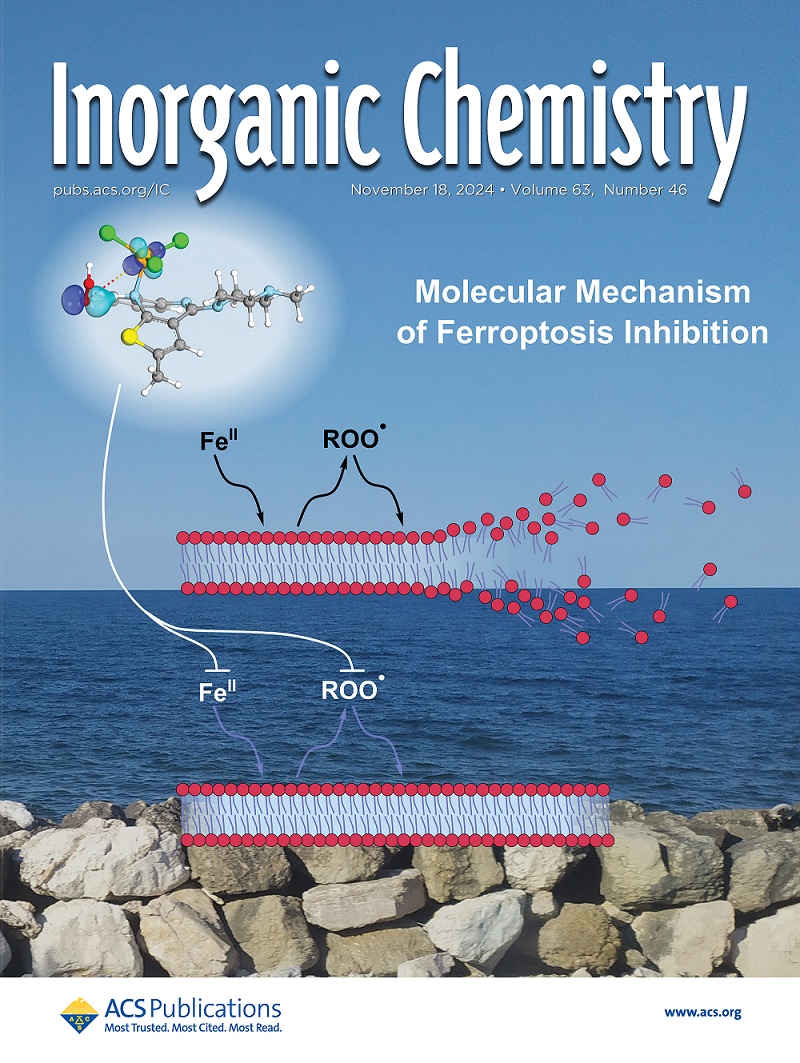Unveiling the Role of Ligand Assistance in H2 Activation and CO2 Hydrogenation Catalyzed by an Iridium Complex: A DFT Study.
IF 4.3
2区 化学
Q1 CHEMISTRY, INORGANIC & NUCLEAR
引用次数: 0
Abstract
Density functional theory (DFT) calculations were employed to elucidate the mechanistic pathways of hydrogen activation and CO2 addition mediated by a novel iridium catalyst. The results demonstrate that hydrogen activation proceeds efficiently via an oxidative addition mechanism at the Ir(I) center, followed by ligand-assisted heterolysis. Detailed distortion-interaction and energy decomposition analyses indicate that the oxidative addition at the Ir(I) center exhibits stronger orbital interactions, which are key determinants of the selectivity in hydrogen activation. In the CO2 addition reaction, the trihydride complex reacts with DBU, inducing a redox transition from Ir(III) to an Ir(I) dihydride intermediate, which undergoes ligand-assisted stepwise hydride transfer. This dynamic reduction pathway significantly lowers the reaction barrier and facilitates hydride transfer. Compared to the direct hydrogenation pathway involving Ir(III) species, this route exhibits a substantially lower energy barrier. Energy decomposition and noncovalent interaction analyses further reveal that the reduced Pauli repulsion in the Ir(I)-centered pathway is a critical factor contributing to its lower activation energy and higher selectivity. These findings highlight the significance of the Ir(I)/Ir(III) dynamic redox transition in catalytic processes, providing valuable theoretical insights for the development of efficient catalysts for hydrogen activation and CO2 conversion.揭示配体辅助在铱配合物催化H2活化和CO2加氢中的作用:DFT研究。
采用密度泛函理论(DFT)计算了一种新型铱催化剂催化氢活化和CO2加成的机理。结果表明,氢的活化是通过Ir(I)中心的氧化加成机制进行的,然后是配体辅助异解。详细的扭曲相互作用和能量分解分析表明,Ir(I)中心的氧化加成表现出更强的轨道相互作用,这是氢活化选择性的关键决定因素。在CO2加成反应中,三氢化物配合物与DBU反应,诱导从Ir(III)氧化还原转变为Ir(I)二氢化物中间体,并经历配体辅助的逐步氢化物转移。这种动态还原途径显著降低了反应势垒,促进了氢化物的转移。与涉及Ir(III)的直接加氢途径相比,该途径具有明显较低的能垒。能量分解和非共价相互作用分析进一步揭示了以Ir(I)为中心的途径中泡利斥力的降低是其具有较低活化能和较高选择性的关键因素。这些发现突出了Ir(I)/Ir(III)动态氧化还原转变在催化过程中的重要性,为开发高效的氢活化和CO2转化催化剂提供了有价值的理论见解。
本文章由计算机程序翻译,如有差异,请以英文原文为准。
求助全文
约1分钟内获得全文
求助全文
来源期刊

Inorganic Chemistry
化学-无机化学与核化学
CiteScore
7.60
自引率
13.00%
发文量
1960
审稿时长
1.9 months
期刊介绍:
Inorganic Chemistry publishes fundamental studies in all phases of inorganic chemistry. Coverage includes experimental and theoretical reports on quantitative studies of structure and thermodynamics, kinetics, mechanisms of inorganic reactions, bioinorganic chemistry, and relevant aspects of organometallic chemistry, solid-state phenomena, and chemical bonding theory. Emphasis is placed on the synthesis, structure, thermodynamics, reactivity, spectroscopy, and bonding properties of significant new and known compounds.
 求助内容:
求助内容: 应助结果提醒方式:
应助结果提醒方式:


